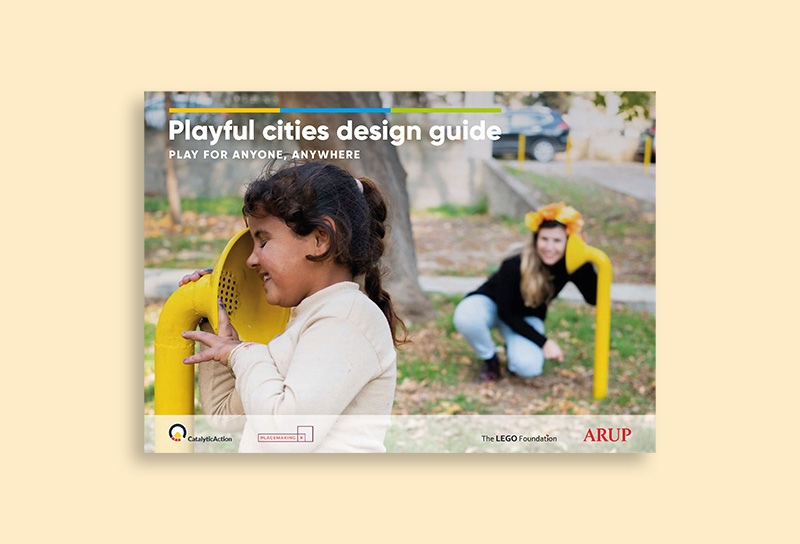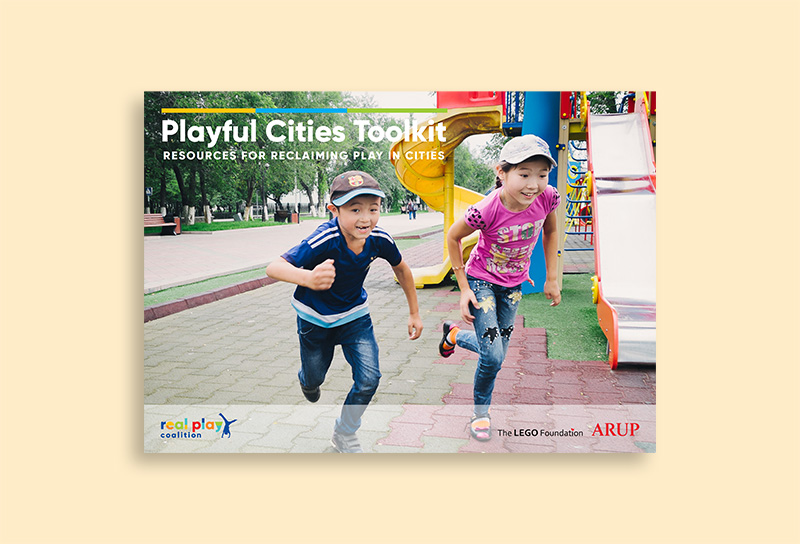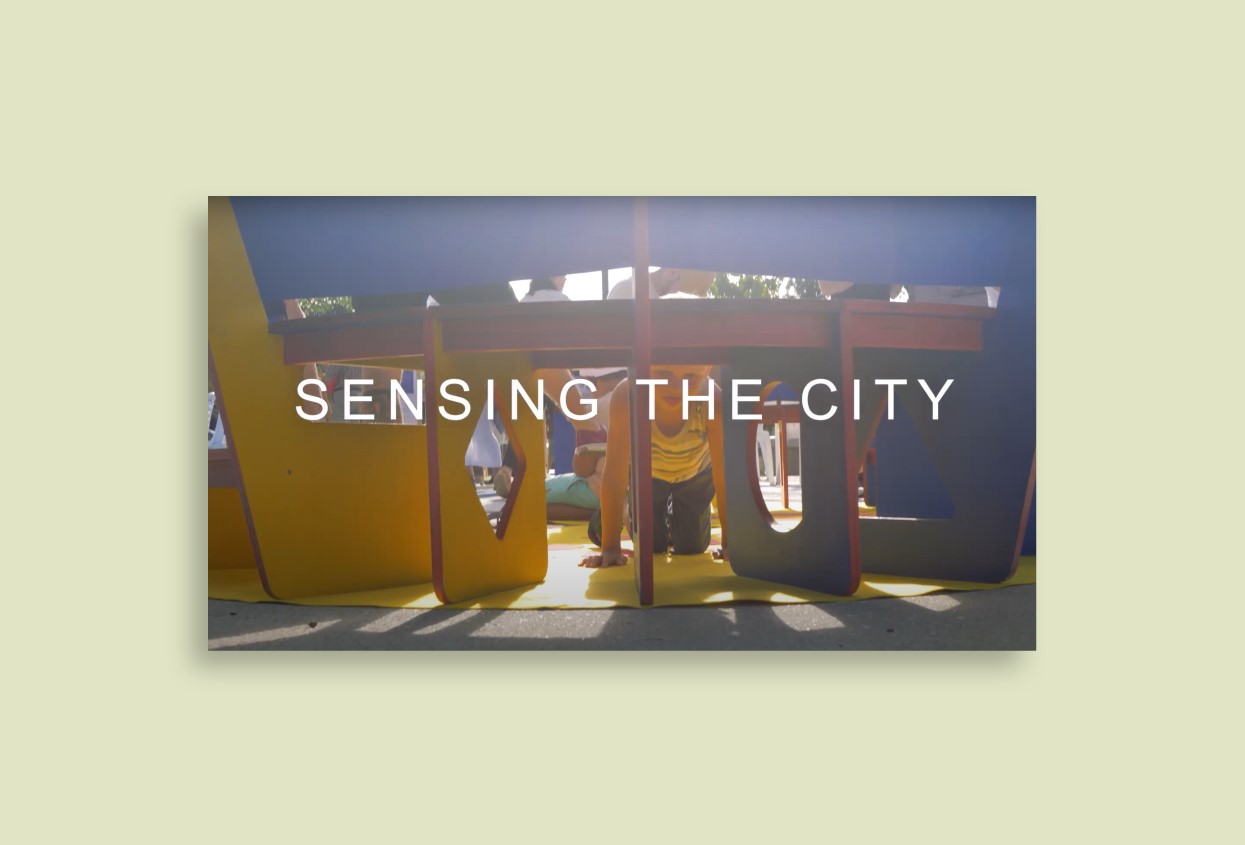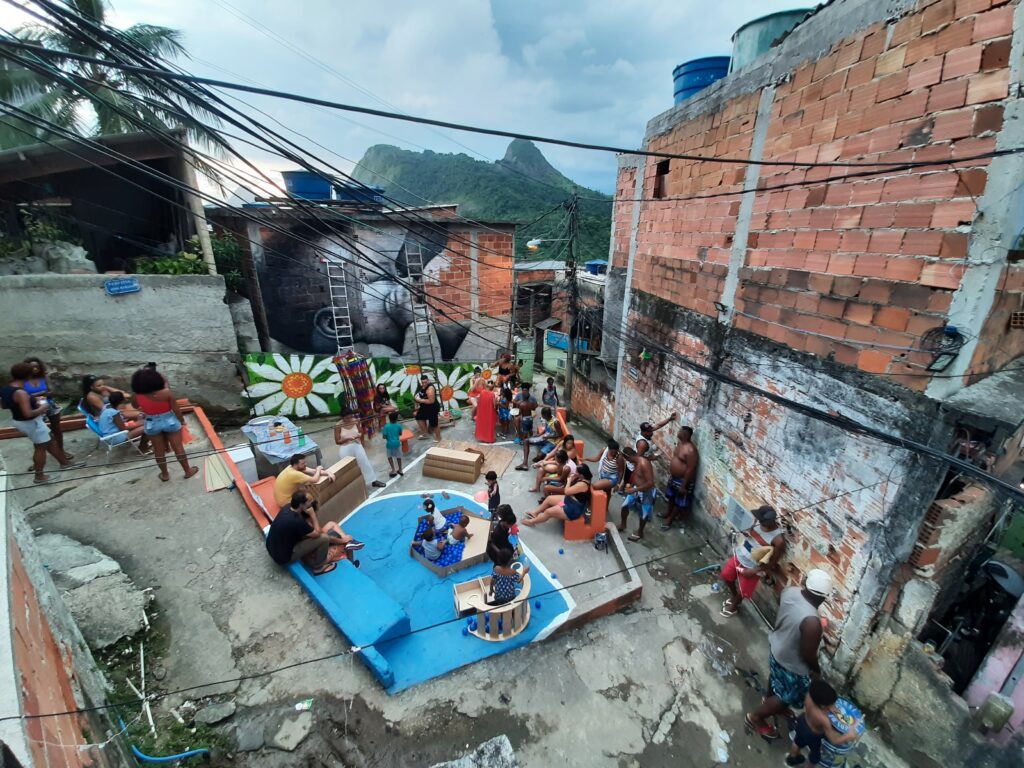
Overview
Location:
Niteroi, Rio de Janeiro, Brazil
Organisation:
E+1
Partner organisations:
Municipality; Local community
Year:
2022
Scale of proximity:
Neighbourhood
Target beneficiaries:
Children 0-5; Caregivers
Urban design that normalizes breastfeeding in Brazil
In Brazil, breastfeeding is a heavily debated topic. Despite several innovative pro-breastfeeding national policies and campaigns since the 1970s, the proportion of women breastfeeding is reducing due to complex changes in family structures, employment practices and cultural norms. Research shows that breastfeeding offers countless benefits for both children and women and is the intervention that can have the most significant impact in reducing infant mortality (Boccolini, 2017).
Therefore, new approaches are needed to continue encouraging the practice across Brazil. Since our team at Estúdio +1 specializes in urban design and advocacy, with experience working with municipalities to incorporate childhood matters into their agenda, the question for us was how urban design could contribute to the promotion and normalization of breastfeeding in Brazil. Our response was our design project “Feel free to breastfeed”, which aims to provide better public spaces to breastfeed, where caregivers and children could feel safe, comfortable and supported.
Identifying an intervention site
Having already established projects and networks in the cities of Fortaleza, Niteroi and Pelotas, this gave us insight into the lack of breastfeeding facilities, with some spaces even openly hostile towards it. We therefore decided that transforming community squares would be an effective entry-point to begin addressing the issue. Appropriate seating, playful elements, and access to water are essential elements for breastfeeding, which are usually not considered when designing public spaces in Brazil.
The design takes place at Jurujuba, a neighborhood of Rio de Janeiro called Niterói, which is a mixture of formal and informal settlements. Since we had already been working with the local authorities and community there for a number of years, we understood well its potential for new and innovative projects.
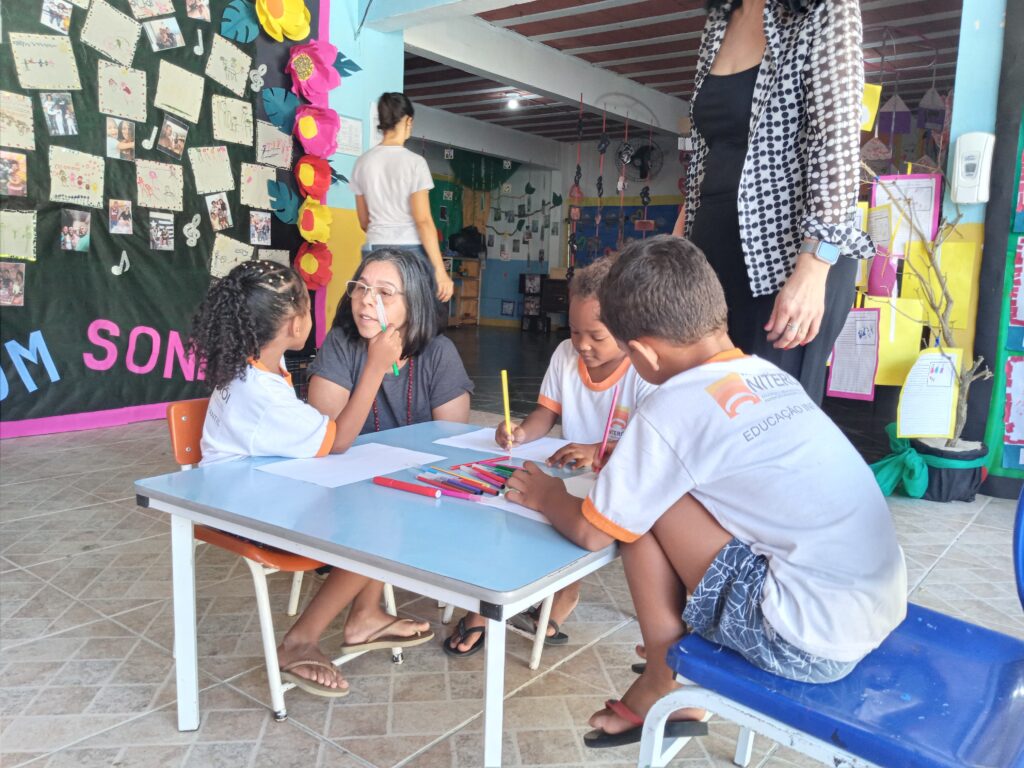
A history of engagement with young children and the local community within the neighbourhood helped to quickly identify key stakeholders and build trust.
Understanding the needs of young children and their caregivers
The Proximity of Care design guide challenged us to consider the multiple dimensions of health, support, protection and stimulation which contribute towards the wellbeing of young children, their caregivers and pregnant women. The framework within the guide also encouraged us to broaden our vision. Our efforts were initially directed specifically to people who are breastfeeding, and creating safer, public breastfeeding spaces for them; we refined our design to also include pregnant people, caregivers of all genders and young children.
Looking to the “Ponto Certo” square, one of the spaces we’re reshaping as part of our project, we have proposed two critical design innovations to be implemented:
(1) A physical intervention, with new seating, spaces for changing babies and elements to play
(2) A communication intervention, by painting an art mural to create awareness and influence behavior and views towards breastfeeding
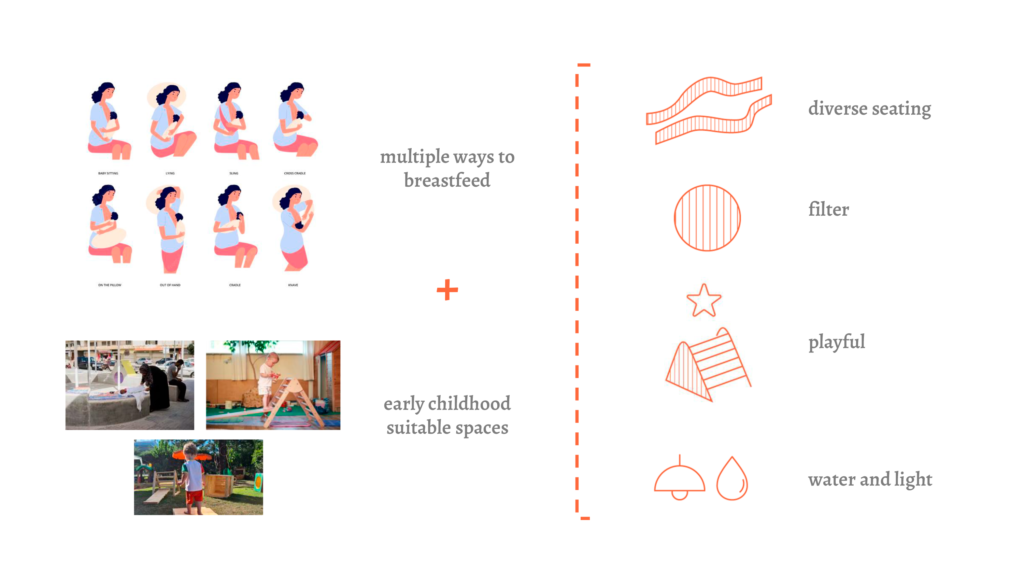
The assessment phase identified aspects suitable for young children and breastfeeding women to be incorporated into the design of the space.
The Proximity of Care approach helped us shape our strategy first by defining our goals, and then providing insight and ideas on how to approach to achieving them. The framework in the guide helped us understand diverse global experiences and encouraged us to test different materials, concepts, ideas, and designs. This guidance was incredibly valuable in helping us incorporate behavior changing strategies in our project, for both people directly targeted by the design as well as public services providers.
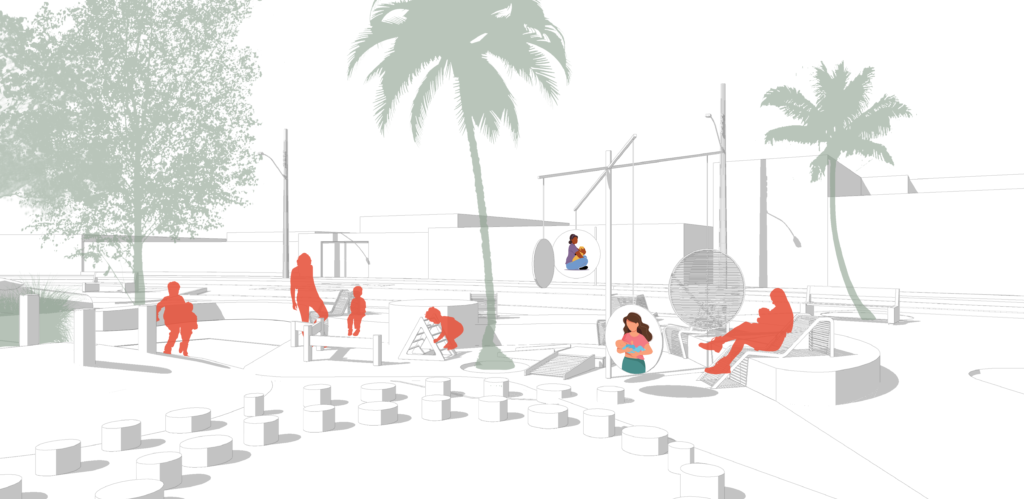
Behavioral change considerations were incorporated within the design by providing a variety of seating to specifically facilitate breastfeeding in a variety of positions.
It also broadened our vision of what we usually consider possible and desirable in public space interventions, which opened up possibilities of how we could refine our design to have an even bigger impact in these vulnerable areas. This insight really strengthened our project straight away in the planning process. Along with the participation of community leaders, the municipality team itself expanded their focus, considering areas that weren’t directly related to the design – such as engaging with the health department – but that are now essential in the development of the project.
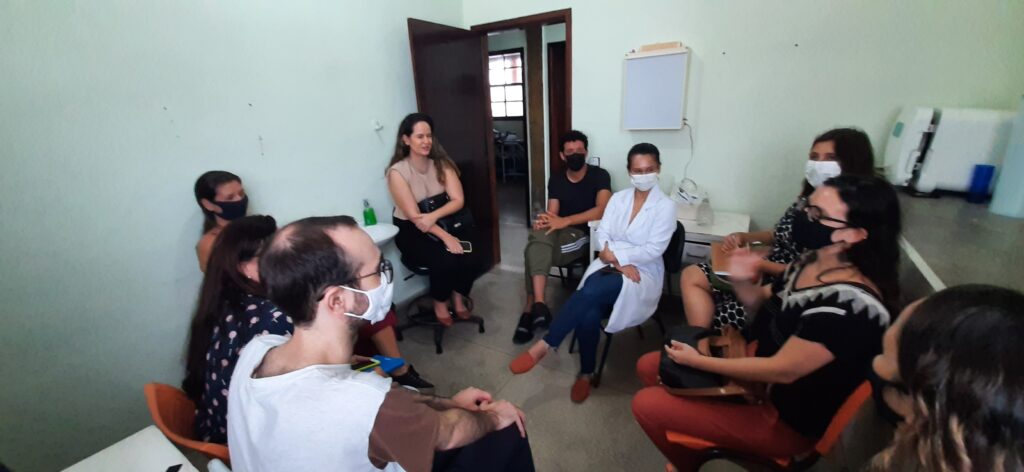
Connections were built between the municipality and the public health department to coordinate approaches to child and breastfeeding friendly strategies
Implementing a pilot and receiving feedback
We ran a pilot for our project in early 2023, constructing temporary urban furniture and painting a collective art mural to engage the community and encourage conversation on breastfeeding and early-childhood. These activities gave us really useful insight on the need to continue receiving feedback from the community and how we can further develop the design. One of the outcomes of the pilot has been understanding the importance of brining children to a central space of the square where they can interact, community take care of them and mothers feel more relaxed to breastfeed.
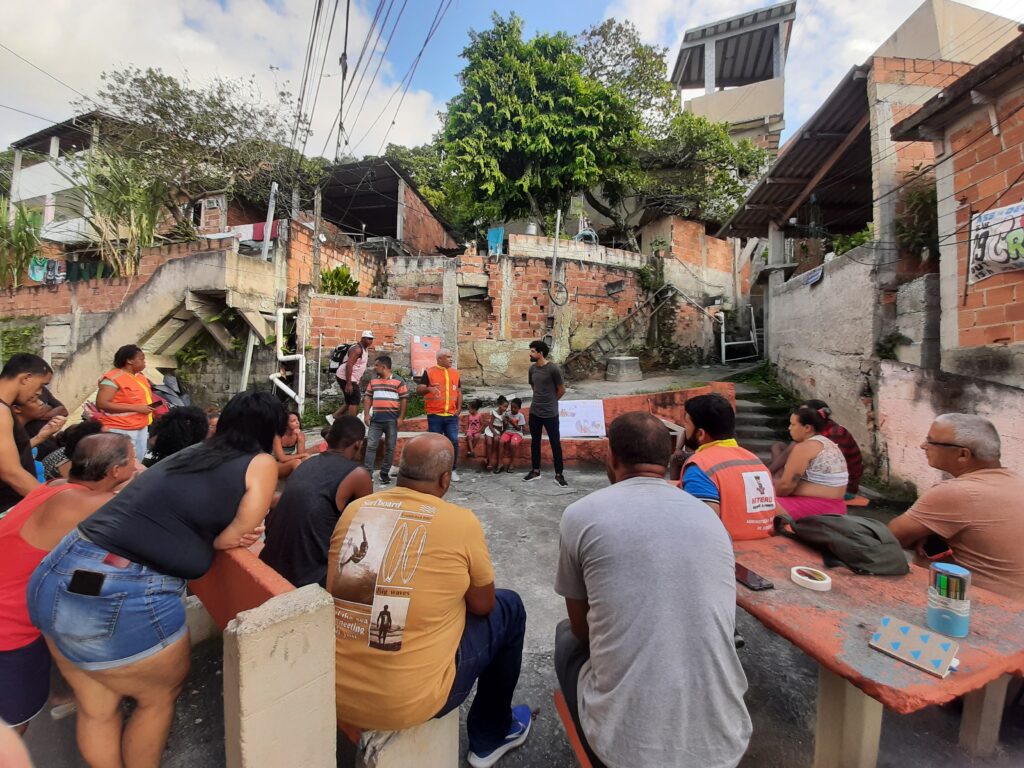
A pilot was run showcasing temporary urban furniture to facilitate breast feeding, as well as bringing together the wider community in a celebration of the potential of the neighbourhood and to receive feedback on the approach.
We will continue to engage with the community to assess if their expectations of the project are being satisfied. As urban projects often take time, diverse expectations from interested parties are a major concern. However, we have noticed a stronger relationship with the community by working closely with them from the outset, and by using multiple approaches to design in an inclusive way.
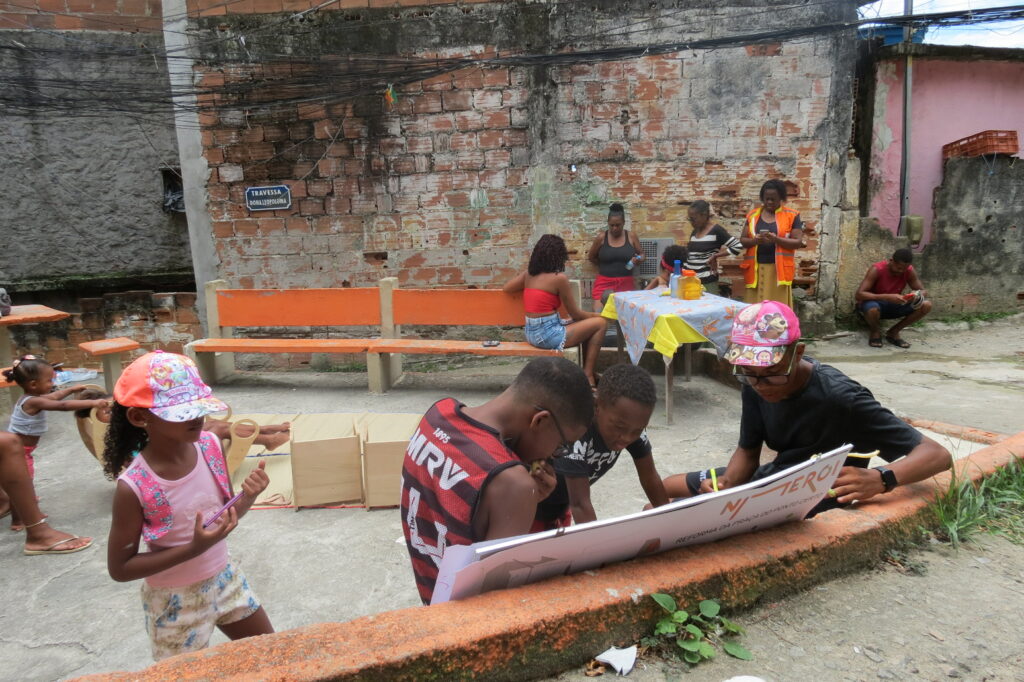
Local children explored the concept design of the intervention during the pilot event and celebration.
The municipality teams are already seeing the impact the Proximity of Care approach can have and we are eager to continue applying the methodology and design. We are aiming to develop multiple breastfeeding friendly spaces in other areas and investing in strategies to design furniture that can be easily replicated elsewhere.
Challenges in designing spaces for young children and breastfeeding in informal sites
As our work is situated between the local community and the municipality, and particularly since we are working in an area that is not completely formal, we have faced some challenges:
(1) We needed to help the municipality find ways to make the project feasible in an informal site, and to embrace new approaches of community engagement.
(2) We needed to demonstrate that small projects are an important and powerful tool to test innovative designs.
(3) We need to continue to integrate existing resources in order to provide access to water and bathrooms in public spaces which are vital for breastfeeding and childcare – a challenge we share with most of the world.
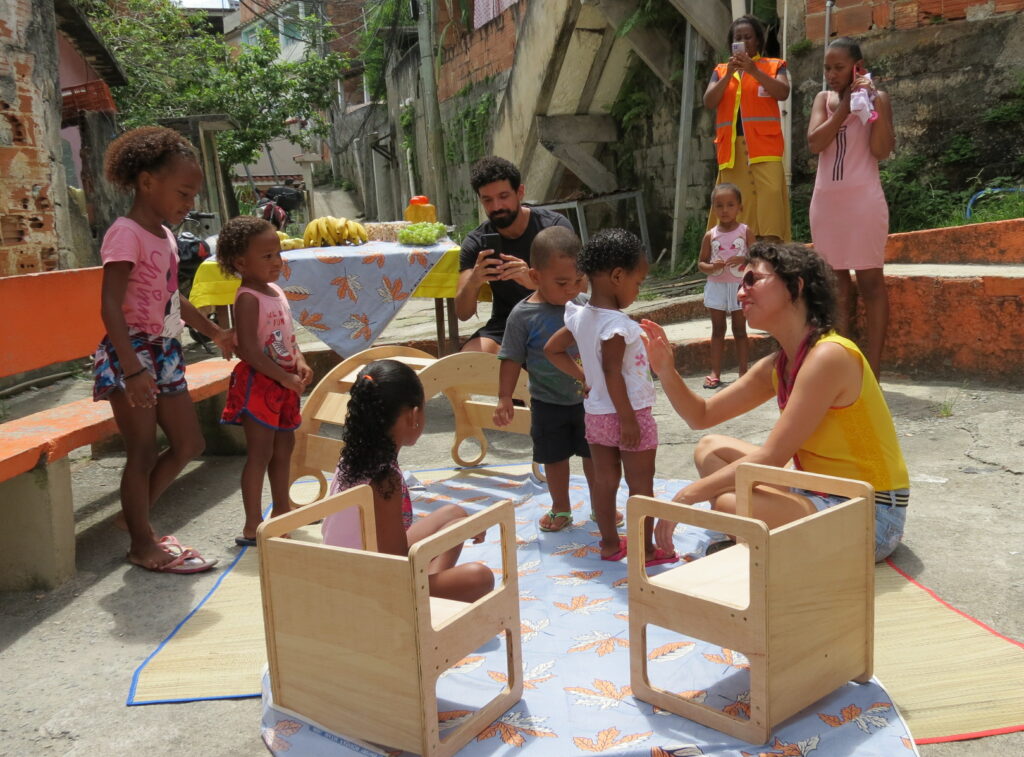
Young children play with the temporary furniture at the pilot and celebration event.
Reflections on the Proximity of Care Design Guide
Although we are still working on solutions to these challenges, the Proximity of Care guide taught us some valuable lessons:
(1) Working with community leaders or potential leaders and empowering them to become advocates for your project is a fabulous tool for engaging with the community. Conceição, resident and worker at the regional administration, was an excellent link, creating contacts and engaging wider community groups.
(2) Each stage of the Proximity of Care guide has insightful tools and resources that are really useful for strengthening your final design. It helped us to assess the concrete matters of the place, directing what elements we would focus on and including communication elements and actions.
(3) The proposed methodology is powerful in presenting inspiring case studies, but it also creates space for new approaches and encourages new ideas. In our process, the guiding principles of design worked as a compass for developing and evaluating ideas that we had been sketching from the start.
(4) For those who are trying the Proximity of Care framework for the first time, we advise to stay open to its proposal and take the methodology as a conducting wire, from the project definition to its implementation. It can open your eyes for unseen possibilities and innovative ways of working.
Links and sources
Boccolini et al. (2017) Breastfeeding indicators trends in Brazil for three decades. Rev Saude Publica. 51:108: Available online: https://doi.org/10.11606/s1518-8787.2017051000029

